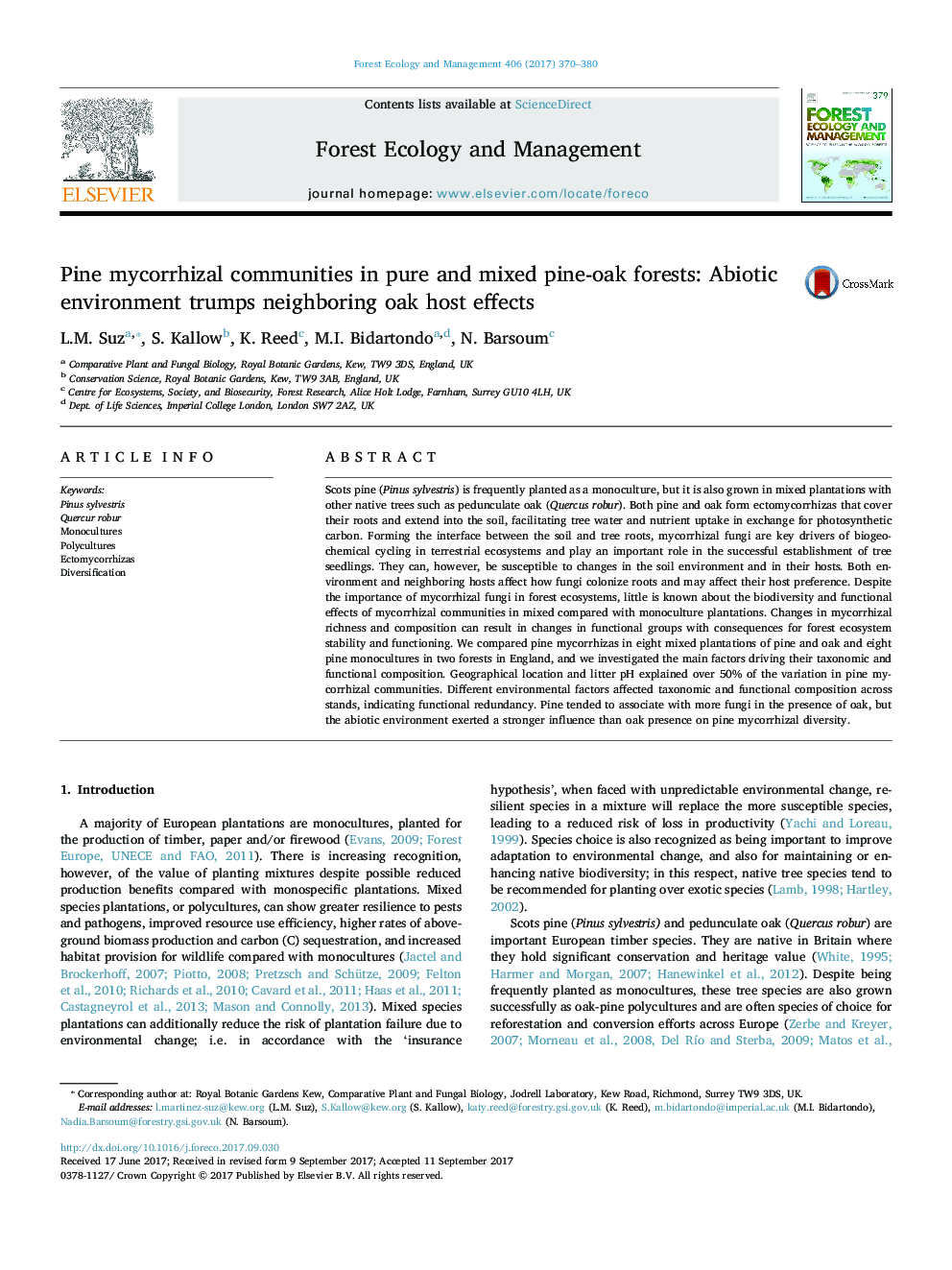| کد مقاله | کد نشریه | سال انتشار | مقاله انگلیسی | نسخه تمام متن |
|---|---|---|---|---|
| 6459034 | 1421352 | 2017 | 11 صفحه PDF | دانلود رایگان |
• Abiotic environment exerts a stronger influence than oak on pine mycorrhizal diversity.
• Less pine specialists but more generalists colonize pine roots in mixed plantations.
• Geography and litter pH explain most of the variation in pine mycorrhizal communities.
• Different environmental variables affect taxonomic and functional mycorrhizal composition.
• Mycorrhizal surveys can help management and policy decisions on forest diversification.
Scots pine (Pinus sylvestris) is frequently planted as a monoculture, but it is also grown in mixed plantations with other native trees such as pedunculate oak (Quercus robur). Both pine and oak form ectomycorrhizas that cover their roots and extend into the soil, facilitating tree water and nutrient uptake in exchange for photosynthetic carbon. Forming the interface between the soil and tree roots, mycorrhizal fungi are key drivers of biogeochemical cycling in terrestrial ecosystems and play an important role in the successful establishment of tree seedlings. They can, however, be susceptible to changes in the soil environment and in their hosts. Both environment and neighboring hosts affect how fungi colonize roots and may affect their host preference. Despite the importance of mycorrhizal fungi in forest ecosystems, little is known about the biodiversity and functional effects of mycorrhizal communities in mixed compared with monoculture plantations. Changes in mycorrhizal richness and composition can result in changes in functional groups with consequences for forest ecosystem stability and functioning. We compared pine mycorrhizas in eight mixed plantations of pine and oak and eight pine monocultures in two forests in England, and we investigated the main factors driving their taxonomic and functional composition. Geographical location and litter pH explained over 50% of the variation in pine mycorrhizal communities. Different environmental factors affected taxonomic and functional composition across stands, indicating functional redundancy. Pine tended to associate with more fungi in the presence of oak, but the abiotic environment exerted a stronger influence than oak presence on pine mycorrhizal diversity.
Journal: Forest Ecology and Management - Volume 406, 15 December 2017, Pages 370–380
